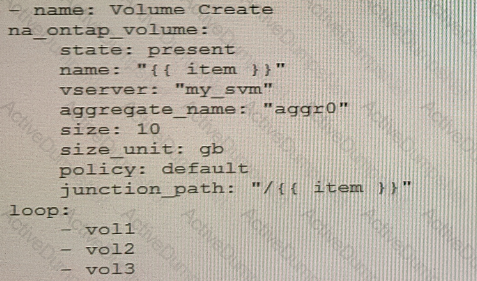Netapp NS0-403 NetApp Certified Hybrid Cloud Implementation Engineer Exam Practice Test
NetApp Certified Hybrid Cloud Implementation Engineer Questions and Answers
You are asked to configure NetApp Trident to provide dynamic and persistent storage using Azure NetApp Files to your Azure Kubernetes Service (AKS) cluster.
In this scenario, which three elements do you need to configure your Trident back end? (Choose three.)
A customer wants their main data set to be stored in their primary location while providing a writable, persistent cache in another location closer to the consumer.
Which two solutions will satisfy the customer's requirements? (Choose two.)
You have a single node Cloud Volumes ONTAP (CVO) system in AWS.
In this scenario, which two activities will cause system downtime? (Choose two.)
What are two stages in the DevOps lifecycle? (Choose two.)
A team compiles a group of artifacts locally. The team decides to allow an automatic process to deploy the compiled artifacts to a production server.
In this scenario, which step was skipped in the DevOps process?
A customer was running a traditional application with the data being provided by an NetApp ONTAP NFSv3 export. The customer is now migrating that same application to run with a container in a Kubernetes environment using NetApp Trident.
In this scenario, how would the customer ensure that the new container-based application has access to the same data?
You have a StorageGRID solution with 1 PB of object data. All data is geographically distributed and erasure coded across three sites. You are asked to create a new information lifecycle management (ILM) policy that will keep a full copy of the grid in Amazon S3.
In this scenario, which component must be configured for the ILM policy?
Click the Exhibit button.
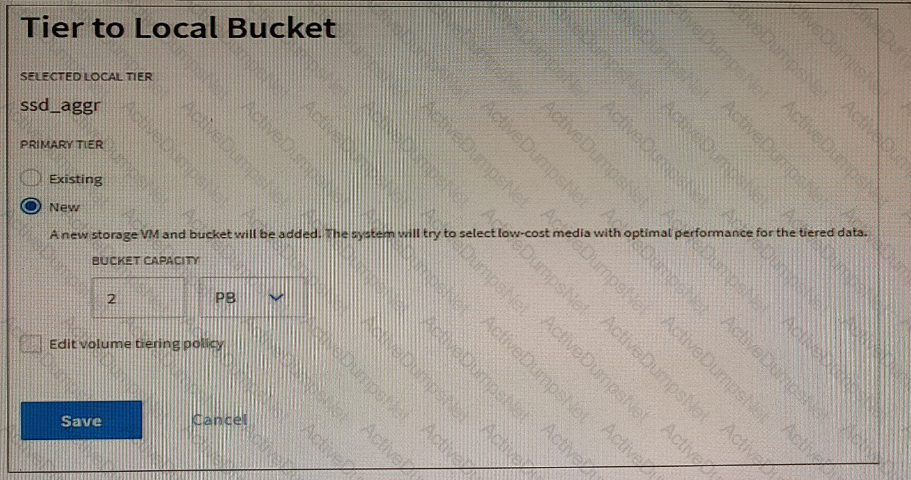
You are configuring a FabricPool aggregate as shown in the exhibit.
In this scenario, where is the S3 bucket created?
You are creating an Ansible playbook to deploy a NetApp ONTAP cluster. You want to take advantage of a loop to automate the creation of several volumes.
What would accomplish this task?
A)
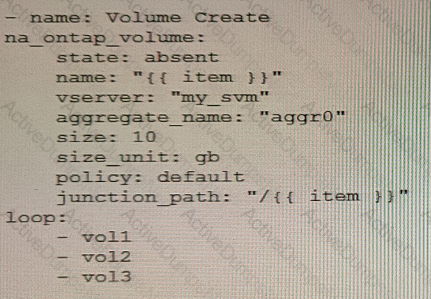
B)
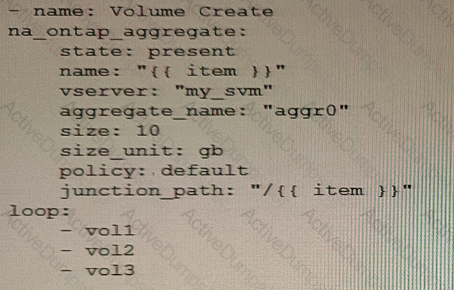
C)
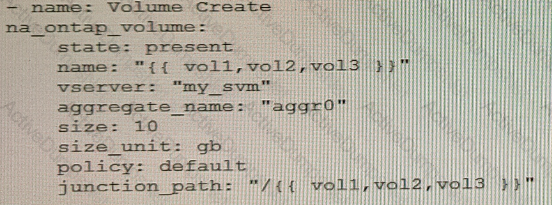
D)
